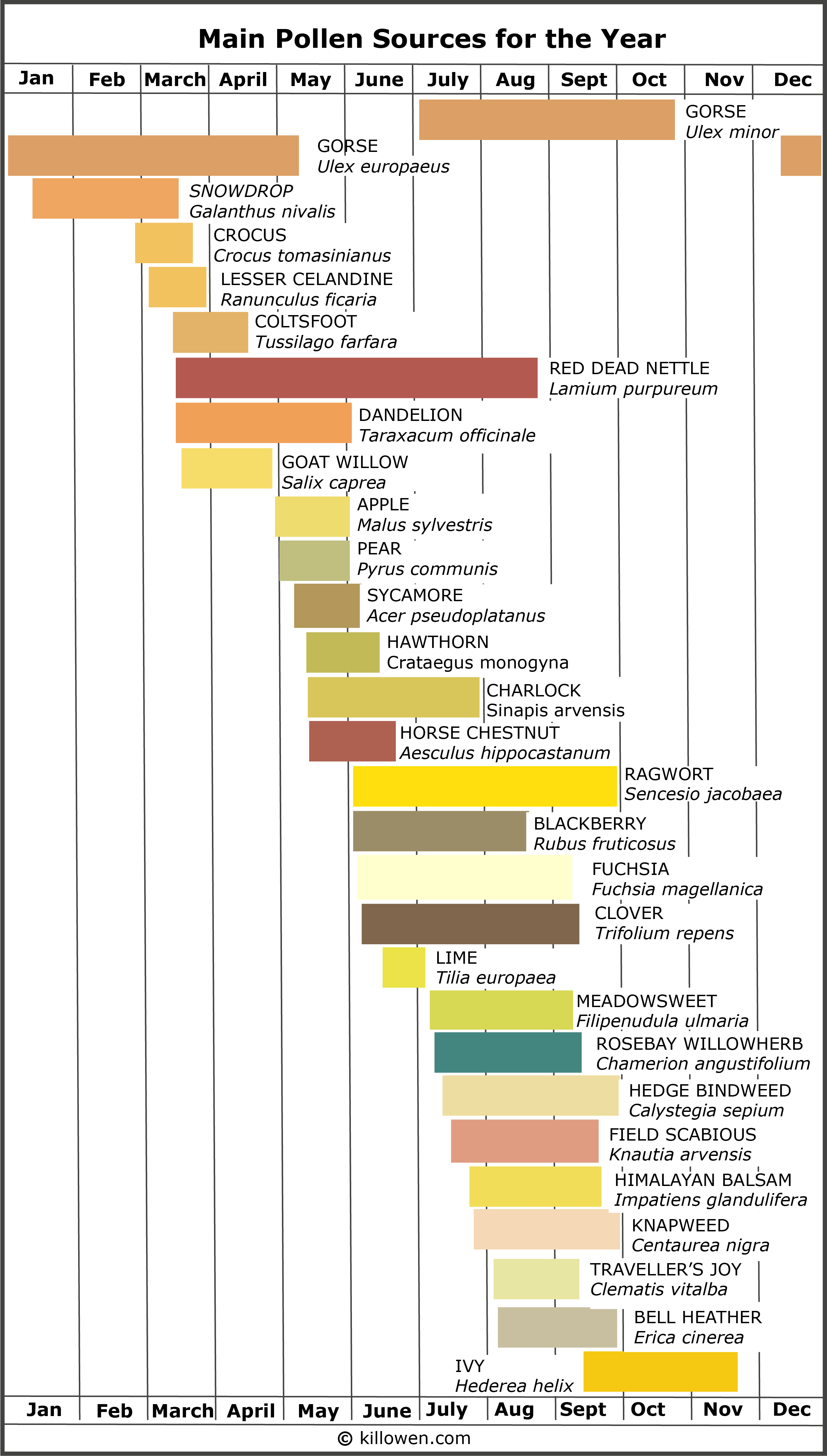Honey 4
Pollen
The main pollen sources in the Stonyhurst area are shown in the chart.
The two species of gorse in particular provide a valuable pollen source all through the year.
It is a fascinating exercise to observe the bees and to try to identify the pollen sources.
Two colours in particular remain unidentified:
Copious amounts of a pure white pollen are seen in August (hedge bindweed ??).
But more surprising is a spectacular luminous orange pollen seen towards the end of August and early September.
A suggestion is that the bees could be collecting this from Poplar leaf rust fungus (Melampsora larici-populina)
In a short article by W. H. Lang. [22] written in 1901 observations on how honey bees use rust fungus as a pollen substitute are described.
The two species of gorse in particular provide a valuable pollen source all through the year.
It is a fascinating exercise to observe the bees and to try to identify the pollen sources.
Two colours in particular remain unidentified:
Copious amounts of a pure white pollen are seen in August (hedge bindweed ??).
But more surprising is a spectacular luminous orange pollen seen towards the end of August and early September.
A suggestion is that the bees could be collecting this from Poplar leaf rust fungus (Melampsora larici-populina)
In a short article by W. H. Lang. [22] written in 1901 observations on how honey bees use rust fungus as a pollen substitute are described.

 black bee with luminescent orange "pollen"
black bee with luminescent orange "pollen"possibly from Poplar leaf rust fungus.
 Also in early to late October copious amounts of a bright orange/yellow pollen are brought in by the bees. The only possible source at this time is the ivy although most reference sources refer to the colour of ivy pollen being a dull yellow.
Also in early to late October copious amounts of a bright orange/yellow pollen are brought in by the bees. The only possible source at this time is the ivy although most reference sources refer to the colour of ivy pollen being a dull yellow.As the photo shows this pollen is anything but dull !